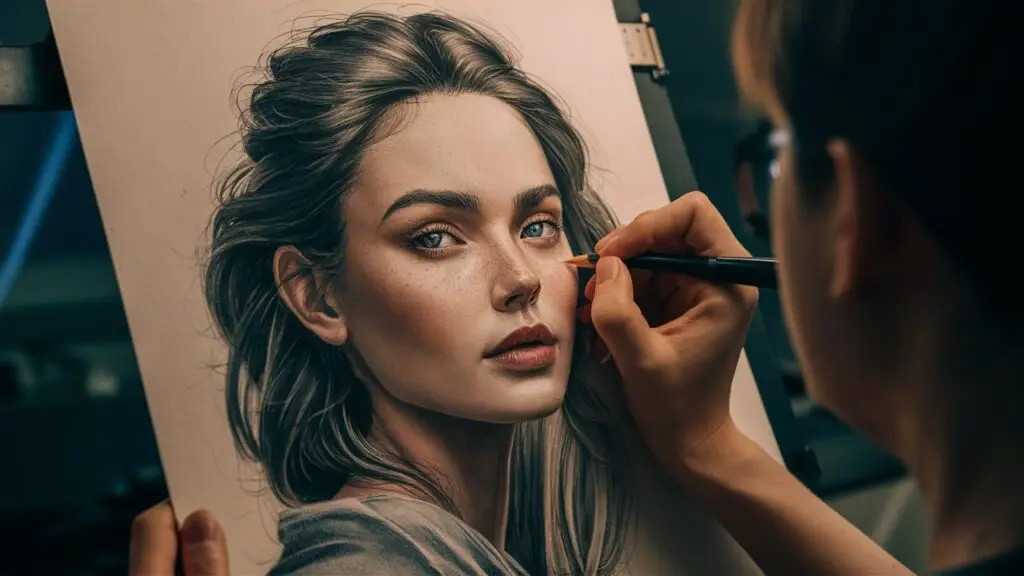Figure drawing is a fundamental skill for artists, offering a profound understanding of the human form and its complexities. Whether for fine art, animation, or illustration, mastering this discipline provides a foundation for creating realistic and dynamic figures.
What is Figure Drawing?
Figure drawing involves the artistic practice of sketching the human body in various poses and positions. It emphasizes capturing the form, proportions, and anatomy of the human figure, often from live models or reference images. This practice is essential for developing an artist’s ability to represent the human form accurately and expressively.
Importance of Figure Drawing in Art
The study of figure drawing hones an artist’s ability to observe and depict the human body accurately. This skill translates into greater confidence and versatility, enabling the creation of compelling, lifelike art that resonates with viewers.
Understanding Human Anatomy
To draw the human figure convincingly, artists must grasp basic anatomical structures. This includes the skeletal framework, major muscle groups, and their relationships within the body. Identifying key landmarks such as the clavicles, ribcage, and pelvis helps in understanding how the body’s forms interconnect and move. These landmarks serve as reference points that guide the accurate depiction of the human figure.
Materials and Tools
Selecting high-quality pencils, erasers, and blending tools is crucial for achieving the desired effects in figure drawing. Graphite pencils of varying hardness and kneaded erasers are indispensable. Paper texture and weight significantly affect the drawing process. Smooth paper is ideal for fine detail work, while rougher surfaces enhance shading and texture.

Warm-Up Exercises
Gesture drawing captures the essence and movement of a pose in quick, fluid sketches. This exercise enhances an artist’s ability to convey action and vitality. Contour drawing involves outlining the subject’s edges with continuous lines, promoting observational skills and a deeper connection with the figure.
Basic Proportions and Measurements
Learning the standard proportions of the human body ensures accurate representation. Commonly, the adult figure is about seven and a half to eight heads tall. Using the head as a unit of measurement, artists can proportion the rest of the body. For example, the torso typically measures about two heads in length.
Constructing the Human Figure
Starting with a simple stick figure framework helps establish the basic posture and proportions of the figure before adding volume and detail. By breaking down the body into basic geometric shapes, such as cylinders for limbs and ovals for joints, artists can build a more structured and accurate figure.
Drawing the Head and Face
Understanding the head’s structure, including the skull shape and placement of facial features, is crucial. Dividing the head into thirds helps in accurately positioning the eyes, nose, and mouth. Detailed studies of individual features like eyes, noses, and mouths, and how they change with expressions, enhance the realism of portraits.

Understanding Light and Shadow
Mastering various shading techniques, such as hatching and cross-hatching, allows for the depiction of light and shadow, giving the figure volume and depth. Using contrast and gradients in shading creates the illusion of three-dimensionality, making the figure appear more lifelike and tangible.
Capturing Movement and Poses
Drawing figures in dynamic, action-oriented poses requires understanding the principles of balance and weight distribution, bringing energy and movement into the artwork. Reference images, whether photos or life models, provide valuable insights into anatomy, proportions, and poses, aiding in the accurate and expressive depiction of figures.
Studying Drapery and Clothing
Observing how fabric drapes over the human form helps in rendering realistic clothing. This includes understanding folds, tension points, and how different materials behave. Including detailed clothing enhances the narrative of a figure drawing, adding context and personality to the subject while showcasing the artist’s versatility.
Refining Your Drawing
Once the basic form is established, adding intricate details like muscle definition, hair, and textures elevates the artwork, making it more engaging and realistic. Regularly checking and adjusting proportions ensures accuracy. Using a mirror or taking a break and revisiting the work with fresh eyes can help identify and correct mistakes.

Common Mistakes and How to Avoid Them
Common proportional errors can be mitigated by regularly practicing measurement techniques and maintaining a consistent unit of measurement throughout the drawing. To avoid stiffness, artists should focus on capturing the fluidity and natural curves of the human body, emphasizing rhythm and movement over rigidity.
Practice and Patience
Establishing a regular drawing routine fosters continuous improvement. Dedicate time each day to practice different aspects of figure drawing. Maintaining a sketchbook to document progress and ideas is invaluable. It serves as a personal reference and a visual diary of artistic growth.
Conclusion and Encouragement
Learning figure drawing is a rewarding journey that enhances artistic abilities and deepens the understanding of the human form. With practice, patience, and dedication, artists can achieve remarkable proficiency, creating works that capture the beauty and complexity of the human body.







